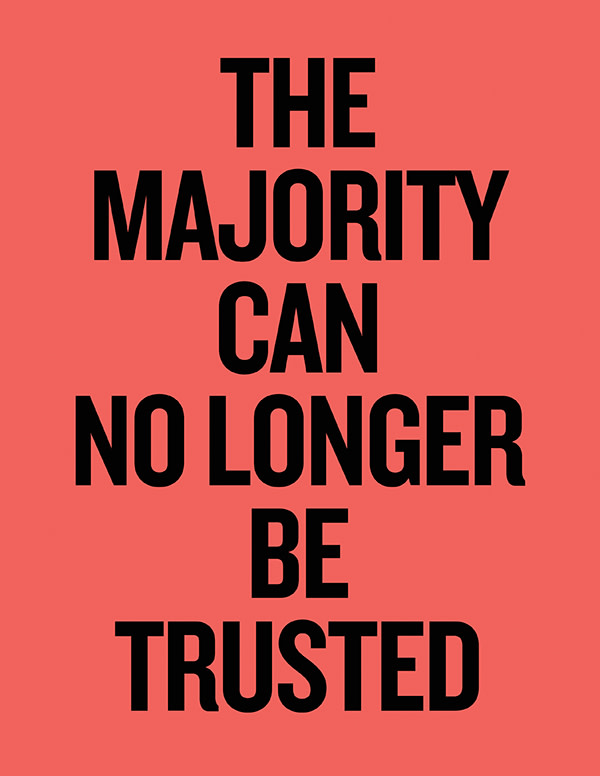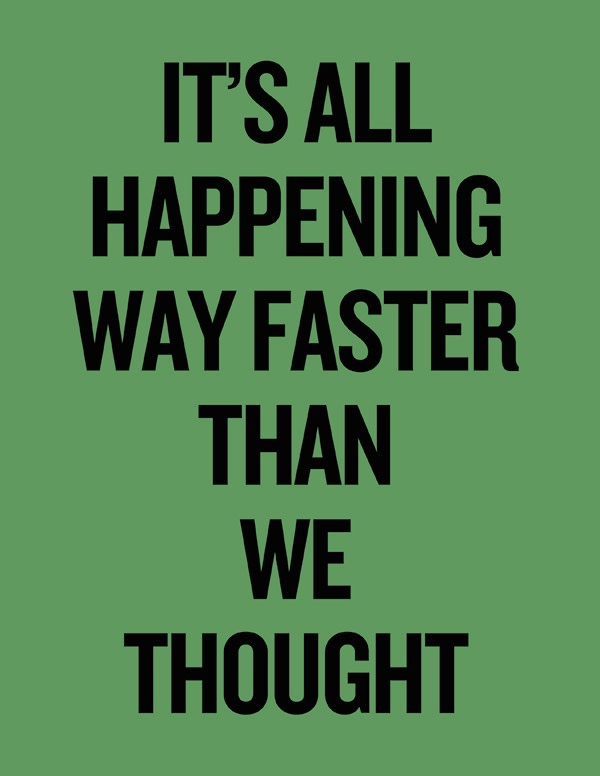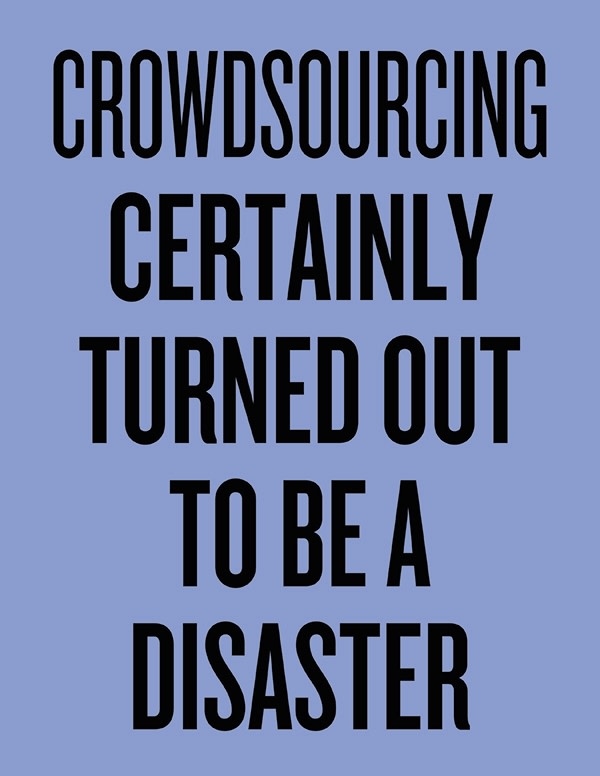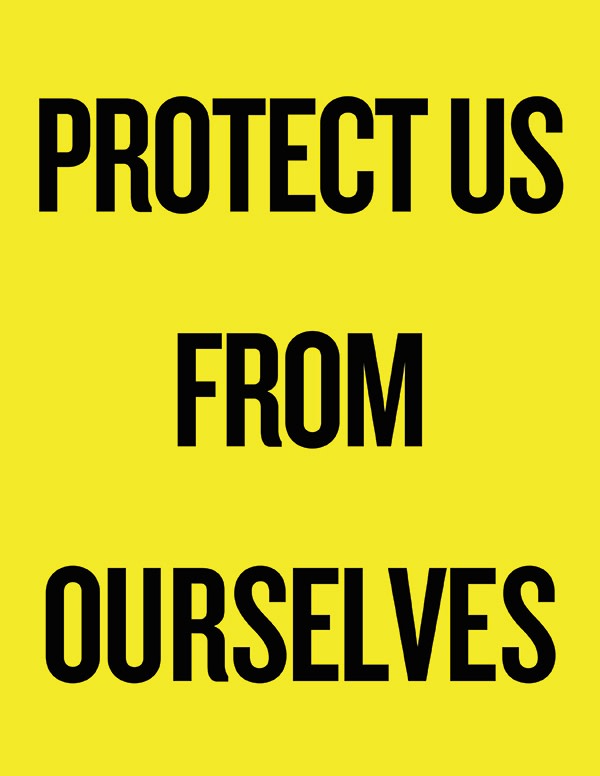Douglas Coupland on why America’s two-party system is no longer fit for purpose

Simply sign up to the Life & Arts myFT Digest -- delivered directly to your inbox.
Here’s something: try to imagine if there were five seasons, not four. Weather and everything else would be just the same as it is now, except instead of spring, summer, autumn and winter, there would be spring, summer, autumn, winter and . . . let’s call it glink: the fifth season. When would glink be? And I wonder . . . would all seasons then be the same length or would glink be more of a boutique season — a pop-up season?
If this sounds dubious, what if I told you the Arapaho have five seasons: would that make the creation of a new fifth season more believable? What if the Beatles had five members not four — would they have become the Beatles? What if cars had five wheels not four? Or if we made weeks eight days long? Many things in life seem to be carved in stone forever when, in fact, most of them are pretty arbitrary.
. . .
I look at the current US electoral situation: 330 million people, and Donald and Hillary are what the system has spat forth. What ought to have been a four-party election (Democrats/Republicans/Sanderians/Trumpfs) instead became a two-party slate so ghastly that the metaphor most commonly used to describe the situation is that of a burning dumpster.
A country’s citizenry is toasting marshmallows over burning garbage trying to pretend everything is OK, and it’s not OK.
OK, that last sentence sounded a bit drastic . . . if nothing else, everybody agrees that the current US election is a hyperbole leaf-blower — and most everyone agrees that something is going random within American democracy. Both parties have somehow come to equate a possible electoral win by their opponents not as a democratically elected majority win but, rather, as mob rule. Each side believes the other is unfit to govern, period — and so it’s not just a matter of winning an election: the other party needs to be smothered and buried. As a bonus, this election has highlighted a specific perversity of human nature — the fact that believing in something that one knows is illogical or untrue somehow makes it much easier to believe.

Actually, let’s take a chill pill and think this through. Maybe there’s no need to be so cosmic about what can seem like the American two-party system’s mutual suicide pact. I wonder if, instead, what we’re witnessing is merely the painful birth of a three- or four-party US political system — something most mature democracies already have, and something the US ought to have seriously adopted decades ago were it not for the country’s battered-wife relationship with its dual-party system that dates back to the late 18th century.
Technically, all it would take for America to enter the multiparty system is to click its heels together three times and say, “Let’s have more political parties”, and much of today’s schizocracy would vanish. People would be able to better choose candidates they can actually believe in and, as we see globally, coalition building would ensure more adult-like behaviour and a willingness for give and take over issues which, at the moment, allow only unyieldingly polarised righteousness and stasis.
Coalition governments work all over the world, but genuinely adding some new viable niche parties with meaningful percentages of the vote will be hard for Americans. Some older Americans still don’t like to think of Alaska and Hawaii as states because they made the rows of stars on the flag go all funny and harder to draw. Yet, we have irreconcilable dichotomies which simply cannot be solved by a two-party system: for starters, the secular versus the religious and taxation versus freedom.
Most of the world looks at the US at the moment and wonders what went wrong. Donald Trump’s baseball caps read MAKE AMERICA GREAT AGAIN. So when did it stop being great? Maybe it’s still great; in fact I’m pretty sure it still is. But if it doesn’t go glink, it may truly stop being great. Two parties worked in 1799; right now it’s a mess. People need to vote for people who they can vote for without feeling like they’re getting food poisoning. Who’s to say even 10 parties isn’t a better solution? Or 50 parties? Or hundreds. For people who are all about freedom, a binary party system is about as unfree as it gets.
. . .

Now let me ask a new question: if the Brexit vote were to happen again tomorrow, do you think the vote would still swing the same way? Highly doubtful. Ditto, recent US political choices. We seem to be at a magical new stage in this thing called democracy where we may have to rethink core tenets about the wisdom of 50 per cent plus one vote. The majority, so it seems, can no longer be trusted. Or maybe it still can be — just not with one vote on one issue. It feels like what we need more than anything in democracy at the moment is some kind of electoral morning after pill.
Can you imagine? Guess what, Britain . . . you don’t have to Brexit after all! (Insert sigh of relief.) We’ll be holding a revote tomorrow.
Phew!
But maybe not. Maybe a double vote on an issue would simply lead to the exact same percentage of results, albeit with more voters. And maybe a double vote would lead to a triple vote — and so on. So where would one draw the line? That’s possibly the sole reason why a one-time-only vote is the system to keep.
But then we create, absorb and digest political dialogue in such different ways than we did even 10 years ago, obviously thanks to the internet and logarithmic technologies. What I’m seeing is our relationship with logarithmic technologies undergoing a sort of technological adolescence, and this is what’s currently giving democracy a similar sort of adolescence . . . so for the time being we’re possibly metaphorically all too young to vote, and we won’t be old enough until we get our tech act together. Until then, politics will continue to have all the texture of a high-school lunch room where jocks and nerds and alphas and emos and cheerleaders squabble, roll their eyes, toss food and throw insults around — except that the results of a food fight or a wedgie are written about in the New York Times.
Here’s another question: will we be voting online in 20 years? Of course we will; nobody doubts that. But right now we vote in a mode so archaic (depending on your jurisdiction: paper, pencils, cardboard boxes, scrutineers) that it feels we’re comparing centuries, not technologies — Punch and Judy shows versus Netflix. So how do we get from here to there?
Political polling also seems to be trapped in another time and place, and unconnected to the world we live in. Hi. I’m phoning you on a landline at dinner time in an attempt to see how people clueless enough to do a poll at dinner time might vote on any given issue.
In the past decade most of us have become addicted to having our every question answered for free in a fraction of a second. I get the impression that polling, as well as voting, needs to be reconfigured into a real-time platform where, assuming certain layers of security are established, citizens can register their opinions en masse and see polling results instantly — the way some news sites allow you to register your yes/no opinion on subjects such as whether Renée Zellweger has had cosmetic surgery or designs for a new New Zealand flag.

Our expectations of real-time data are so heightened now that when reading online news, we often nosedive directly from a story’s headline to the comments section to see where the real action is. The writing is so often much more entertaining and vitriolic than any official news story could ever be, and probably far more indicative of common sentiment. Interestingly, many outlets are thinking of scrapping their comments sections. Vraiment? That’s part of the fun! But for the person whose job it is to monitor reader comments, it must feel like being the teacher who drew the short straw and has to preside over school detentions at day’s end, keeping a constant eye out for paper aeroplanes, tossed chewing gum and students carving swear words on to desktops.
. . .
I think the best TV show currently not on TV is a show called Pamphleteers. In this show, hosts would go politically pamphleteering door to door, secretly conceal movie-cams in their baseball caps and record people’s reactions when offered information on a candidate they obviously don’t agree with. I think 99 times out of 100 the response would be a bland yes-thank-you-good-bye, but it’s pretty obvious that there would be at least one person in 100 who’d go batshit crazy and spew all kinds of amusing invective into the hidden camera. These almost cost-free jeremiads would make for compelling television or website viewing. Hello Viceland TV!
. . .
I guess a large issue in all of this is anonymity. Voting is a sacred experience that can only be performed alone, with all votes being anonymous. But as we’ve learnt over the past decade, going online — also an intrinsically solitary activity — seems to unmask demons nobody could have expected to lurk within us. Anonymity can turn us into monsters and quite possibly makes people make very stupid decisions. So maybe a political morning after pill isn’t the means to get us through democracy’s frenemy relationship with logarithmic technologies. Maybe the answer is to make all votes public. Boy, wouldn’t you want to go directly to the comments section on a political story that suggested an idea like that?
“Slogans for the 22nd Century”, is an exhibition at the Shanghai Himalaya Museum in Shanghai. All artworks © Douglas Coupland
Douglas Coupland’s new collection of stories and essays, ‘Bit Rot’ is published by William Heinemann (£20). A museum show of the same name is on at Munich’s Villa Stuck. Another show of his work, ‘Assembling the Future’ is at St Petersburg’s Manege until October 25
Comments